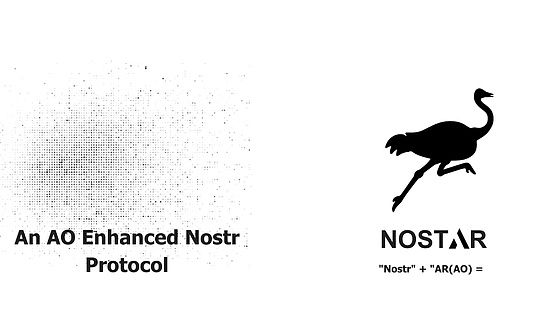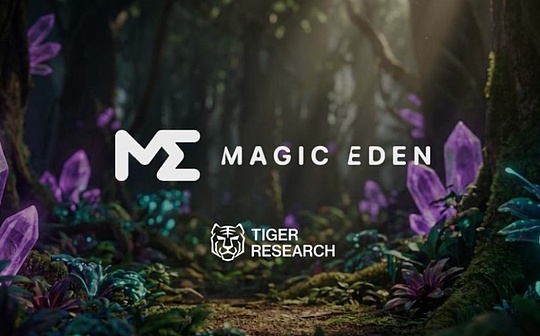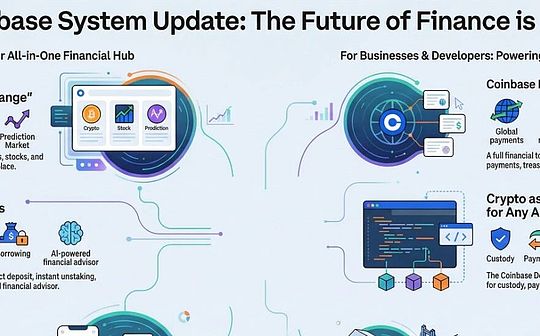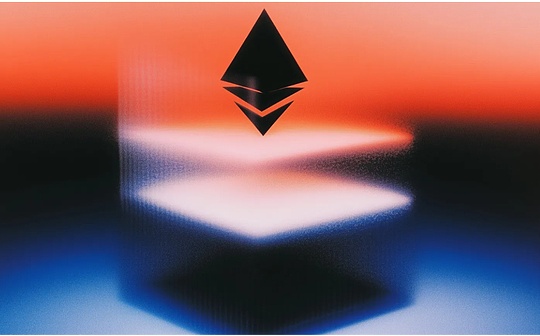
AO is overcurrent calculation. NOSTR is a decentralized social agreement. How can I compare it?What positioning and development paths do we have?
When you see the title, you may feel strange: AO represents a hyperbar calculation, and NOSTR is a decentralized social agreement. The two seem to belong to a completely different field and it is not easy to compare.However, if we go into the level of technology realization, we will find itThey are essentially “message transmission protocols”In this way, they are comparable.
As a message transmission protocol, the core element is naturally the “message” itself, and everything is carried out around the transmission of messages.So how is the news defined in the AO and NOSTR network?How do they support the network architecture of message transmission?How to integrate with other agreements?What are their respective positioning, main application scenarios and development trends?
This article aims to deepen the two protocols of AO and NOSTR, focusing on exploring the effects of the structure of the agreement on function, and conducting detailed analysis around the above issues.
Concept and characteristics of messages
Message in AO
In the AO network architecture, Message is a basic information unit transmitted between each network unit (MU, SU, CU) or between each process.They can achieve information exchange and collaboration by sending and receiving messages.
AO is designed as an asynchronous communication network driven by a message.First of all, AO requires messages to drive when starting a process (starting a process). These messages can come from external users or other processes.Secondly, inter -process communication between AO is asynchronous, which means that the sending and receiving of the message is the operation of the sender and the receiver.The process of sending messages does not require the response or confirmation of the receiver, and other operations can be performed immediately.This characteristic has significantly improved the efficiency of parallel computing AO.
In the AO network, the asynchronous transmission of the message and the characteristics that do not need to wait make it an ideal choice for processing large -scale parallel computing tasks, because it allows each part of the system to perform parallel without requiring the response of other processes for a long time.
In AO, each message follows the ANS-104 standard of the Arweave ecosystem, which is a data packing agreement.ANS-104 significantly improved the throughput of data read and writing by serializing multiple transactions into a binary transaction.This protocol is not only simple data packaging, but also adds the owner, signature, target address, label, data and other fields to the packaging data.This design allows ANS-104 to support a variety of data types, including documents, pictures, audio and video, games, data models, program code, and holographic status.In addition, it also supports data ownership and signature verification, providing guarantee for the security and integrity of data.
These features of ANS-104 standards are particularly important for AO because they enable AO to establish a variety of application scenarios for different data types.The unified message format has also greatly promoted high -efficiency communication and seamless collaboration between processes. It can also improve the efficiency of storage and settlement on arweave, so that AO can effectively build data availability layers and data consensus, thereby supporting its extensive extensiveApplication requirements.
Event in Nostr
In the NOSTR protocol, a standard message format based on the JSON structure definition is used to describe data of various types.This message format is called event, and is the basic data object in the NOSTR network.
The most commonly used message structure is being integrated into a commonly followed standard, called NIPS (Nostr Implementation Possibilities) protocol standard.This consistency and standardization greatly improve the efficiency of data processing and management, and help enhance the operationality and stability of the system.Through NIPS, users can perform various operations and interactions in the NOSTR network without worrying about the differences of the data format or inadequateness.
The JSON structure is used to define the event data format in the NOSTR protocol. This structure contains different fields. Each field has different functions. For example,:
-
PUBKEY field:The user’s public key for the sending event is used to identify the identity of the user.This public key will be used to sign the incident to ensure the authenticity and integrity of the event.
-
Kind field:Used to indicate the type of event.It can represent different types of messages, such as chat room messages, wallet information, etc., and can also represent specific behaviors of users, such as recommending relay lists, executing a certain operation, etc.
-
Content field:Including the specific content of the event.This field supports a variety of data types, such as social media stickers, papers, audio and video.Users can express various information and data they want to convey here.
-
SIG field:Digital signatures for storing events.This signature is generated by the sender using their private key, and then uses the corresponding public key to verify by the receiver’s client.Signatures can ensure that users who have the corresponding public key did send the event at a specific date, thereby enhancing the credibility and verification of the event.
-
Nympho
For detailed event data structure descriptions, please refer to: https://nostr.how/zh/the-protocolContent.The NOSTR protocol provides a clear framework for the sending, receiving and verification of the incident through these fields and structures.This design helps ensure the security, consistency and reliability of the data.
All fields are combined together to express a complete and specific event.In summary, the incident is a data structure that contains any content and is signed by the user. This structure reflects the positioning, characteristics and functions of NOSTR:
-
NOSTR is an information release, storage and receiving systemEssenceNostr has established an efficient data exchange and management framework by adopting the JSON structure and the NIPS protocol standard, ensuring the consistency and analysis of information, providing users with a stable and reliable and unified information communication environment;
-
Support client verification: The data structure supports verification on the client, so no need to trust any relay server or third party, it can directly verify the authenticity and integrity of the event.
-
Build a decentralized, anti -review, and verified social network: The characteristics of this data structure make Nostr can be used as a decentralized platform. Users can freely communicate and share information in them without worrying about reviewing or information tampering.
Support message transmission network structure
AO: MU/SU/CU constitutes a collaborative network
The AO network is composed of three modular units of MU, SU, and CU, and runs and collaborates through messages and processes. The network architecture is shown in Figure 1-1.
>
Figure 1-1: Modern and mutually collaborative network units to form ao network architecture of AO (picture from AO white paper)
Process (Process) is a computing unit in the AO network. Starting an application equivalent to starting one or more processes on AO, the system will allocate and dispatch resources for each process, such as MU, SU, CU, virtual machines, memory, memoryWait to execute this process:
-
MU (Messenger Unit): This is a messenger unit that is responsible for sending information to the appropriate SU for processing, and then delivered to CU to perform calculations. The calculation result returns the SU.
-
SU (SCHEDULER Unit): This is the scheduling unit, responsible for scheduling and message sorting, and upload the message to Arweave;
-
CU (Computer Unit): This is the calculation unit, accepting messages, execution of calculations, and realizing status conversion.
As mentioned above, the network structure and operation of AO indicate that:
-
AO is a message transmission system
The message is the core element in the process and the only job object of MU, SU and CU.The entire process is carried out around the message. The process is the operational activity of the message collection, which includes the complete process of receiving messages, message transmission, message scheduling and sorting, execution calculation (message status conversion), output and storage calculation results.
Therefore, AO is a message transmission system that can be committed to building information publishing and real -time communication and interaction, content distribution, etc., such as decentralized social networks, social media, and decentralized audio and video demand/live broadcast platforms.
-
AO is a super -combined computing network
AO is a modular network. The calculation is executed under the chain. It is not restricted by the block consensus, so that the calculation unit (node) can make unlimited expansion as needed, which greatly improves the computing performance.
In the AO environment, the calculation task (parallel process) can be opened at the same time, which can run independently on different computing nodes and complete the verification locally.This makes AO a distributed, verifiable ultra -hyper -prolonged computer.
Although each calculation process can run independently on different nodes, they can transmit and collaborate through a unified information format (ANS-104).This method connects the independent operation process to form a unified network.
-
AO is an open platform
The core of AO is an information protocol that allows communication between different applications running on Arweave.Each application can send information to other applications through the AO network, and use AO for a combined operation to achieve cross -chain information exchange.
The AO network runs under the chain and can be seamlessly connected to the web2 application.By calling the AO protocol interface, the web2 application can participate in this decentralized network.This characteristic allows AO to eliminate the gap between Web2 and Web3 applications, and realize the credible information exchange and application interoperability.AO’s communication protocol design mechanism makes it an open platform, bringing unlimited possibilities to developers.
In summary, AO’s network architecture supports it to become a combination, interoperability, scalable, verifiable, decentralized and open computer network platform.It is not only suitable for social applications with the theme of information release and communication, but also can support applications with higher computing performance and more complicated business logic, such as machine learning, independent decision -making agents, graphic rendering, online games and DEFI applications, etc.Essence
Nostr: Client-Relay structure
Nostr is the abbreviation of “Notes and Other Stuff Transmitted by Relays”, which means “commemorative annotations and other contents”.There are two main components in the network, which are shown in Figure 1-2.
>
Figure 1-2 NOSTR’s network structure
-
Client
This is an application running on the user side, which is used to read and write data into a relay server.The client uses the public key as the address of the user sends and receives the event, and the private key is used to sign the event when sending an event to prove that the user himself operates and prevent tampering.When receiving an event, the client uses a private key to verify the signature to confirm the source and integrity of the event.
The client allows users to connect to relay servers that are distributed in different places and any number.Users can publish information on one relay and retrieve information on another.This means that the client (user) does not need to rely on any specific relay server to effectively protect user data and behavior.
-
Relay server
The relay server has the ability to monitor, grab and store client events connected to it, and forward these events to the subscribed client.
Anyone can run the relay server, and multiple relay servers can replace each other. This design weakens the importance of a single relay, reduces the risk of single -point failure, and enhances the ability to resist review.In addition, competition between multiple relays can promote the improvement of service quality, such as providing larger storage capacity, faster response speed, and filtering of spam information.
The relay server can choose all or part of the content of the user according to their own needs, and determine the length of the storage, which provides greater flexibility for the positioning and business behavior of the relay.At the same time, there is no need to communicate with each other between the relay servers, so there is no problem at the level of consensus, and no data synchronization is required.The data synchronization is achieved through the sending and receiving of the event between the client, which is fundamentally different from the blockchain node.
This architecture can not only improve the flexibility and efficiency of the system, but also effectively cope with different use scenarios and needs.
It can be seen that NOSTR uses a lightweight network structure like Client-Relay, which can not only improve the flexibility and efficiency of the system, but also effectively support the construction of a decentralized, anti-review, and verifiable information release system to meet people’s pair of people’s pairsFreedom of speech, smooth communication and data security and privacy control.This design effectively responds to the challenges and disadvantages brought by centralized social media.Therefore, NOSTR is known as a decentralized social agreement and is widely favored by developers to build various decentralized social applications, such as Damus, Yakihonne, IRIS, etc.
Integrated with other agreements
AO+Arweave: Decentralized World Computer
AO runs above Arweave and achieves seamless integration with Arweave, as shown in Figure 3-1.
>
Figure 3-1 seamless integration of AO and Arweave (picture from AO White Paper)
This is a implementation of the storage consensus paradigm (SCP).In this innovative paradigm, the storage (consensus) and calculations are effectively separated, making it possible to computing and chain consensus on the chain.This architecture brings obvious advantages:
-
High performance calculation:The calculation of smart contracts is executed under the chain and is no longer subject to the block consensus process on the chain, which greatly expands the calculation performance and makes high -performance calculations feasible.
-
Excellence calculation:Each process on different nodes can independently implement parallel computing and local verification, without waiting for all nodes to complete repeated calculations and global consistency verification as in the traditional EVM architecture.This design enables AO to achieve super -combined calculation.
-
Customized calculation:Arweave provides AO with permanent storage of all instructions, intermediate status, and calculation results. The data available layer and consensus layer as AO.The execution of each application (smart contract) is closely related to the data stored in Arweave. Calculating logic and data resources can be customized according to the needs of the application of local nodes.This flexibility far exceeds the traditional EVM model, and all nodes must perform predetermined operations at the same time to pursue the consistency of the entire network state.
In summary, AO adds an over -the -line computing layer to Arweave, and Arweave provides AO with support for consensus.The combination of the two created a decentralized world computer, which opened a broad application innovation space for the decentralized world.
Nostr + Lightning: Build decentralized information
andvaluenetLinked
Because Nostr’s developer Fiaatjaf is also a developer of the Lightning Network, Nostr natively supports the lightning network.Lightning Network is the second -layer solution of the Bitcoin blockchain, which expands the function of the blockchain under the chain by using channels.It effectively solves problems such as slow Bitcoin transaction speed, limited throughput, and high transaction costs, making high -frequency and low -cost bitcoin small payment possible.
The combination of Nostr and Lightning Network, one of the most direct applications is to achieve “flashing” in social applications.NOSTR’s popular client DAMUS has built -in Bitcoin Lightning Network payment function. Users only need to fill in Nostr’s public key to easily call the one -time cost of Lightning Network Pay Relay.After the payment is completed, the user will receive a lightning network invoice.For the detailed workflow, see: https://nostr.how/zh/zaps, the webpage explains the operation steps in detail.
In terms of asset issuance, the Taproot Assets (TAP) on the first floor of Bitcoin (TAP) is compatible with the Lightning Network. It can introduce Taproot assets and Bitcoin’s smallest unit Satoshis to the Nostr ecosystem and use the lightning network for instant and economic benefits.Asset transfer.This not only enriches NOSTR’s asset type, but also provides more possibilities for application scenarios such as social networks, payment and DEFI.
In addition, members of the CKB community also proposed the Nostr binding protocol, using RGB ++ technology to bind Nostr Event with CKB Cell.This measure allows users to create and distribute native assets in the Nostr social network, which effectively solves the problem of native payment in social networks.
More importantly, the combination of Nostr and Lightning Network is opening a new business model for decentralized applications, namely V4V (Value 4 Value).
The concept of V4V believes that monetizing non -scarce information is a very difficult task.The default monetization model of the traditional network world usually depends on advertising. This model seriously depends on centralized monitoring and user behavior analysis.V4V provides an alternative that allows free flow of information and value without being restricted or intermediary.This method is not only a new method of online monetization and byte (byte), but also a new way for content creation and value transmission.
The V4V solution is bringing innovative value for social applications, podcasts, and live broadcast platforms based on NOSTR,For example:
-
The decentralized media information interaction agreement Yakihonne supports the integration of NOSTR and Lightning Network. It uses SATS as a reward payment, and the total annual payment exceeds 90 million SATS.
-
Nostrwatch.Live is a decentralized live broadcast platform running on the Nostr and Lightning Network, and builds a two -way streaming platform for “Value For Value”.When the player sends the real -time media flow to the audience, it also receives the SATS payment flow from the audience.Once the payment stops, the streaming signal also stops playing.This is different from the traditional prepaid model. The audience does not need to subscribe or pay in advance.
-
PODVERSE is an Podcasting 2.0 application that can integrate with Alby to send Boostagram (a donation method to send a message to the creator) and SAT payment flow to the podcast.When “streaming Satoshis” in Podverse, the application sends Satoshis to the podcast that users are listening to according to the listening time per minute.
It can be seen that through the combination of NOSTR and Lightning, Nostr has gradually evolved from a decentralized information transmission network to a decentralized transmission network that integrates information and value.This evolution can not only protect personal remarks from infringement, but also ensure the safety of personal assets, making it a carrier and network of value exchange.This evolution has opened up new possibilities and development opportunities for the innovation of large -scale and consumer applications, and may become a feasible way to achieve the large -scale use of Web3.
Summary: Structure Decision Function
In the above, we mainly analyze the AO and NOSTR protocol from two aspects: data structure and network structure, and based on the principle of “structure decision function”, we deeply analyze the main functions and application scenarios supported by each protocol:
-
From the perspective of data structure
From the perspective of data structure, the AO and NOSTR protocol have some common points.They are all information transmission protocols that support information publishing, communication, interaction and content distribution of various data types, and can build decentralized social networks and decentralized social media applications.In addition, they all have the functional characteristics of decentralization, anti -examination, signature verification, and privacy and security protection.
However, they also have significant differences.The positioning of the NOSTR protocol and the main application scenarios focus on the above -mentioned applications, and these are only a small set supported by AO data structures and applications.The focus of the AO protocol is to support super -combined computing, and its application fields are more extensive and far -reaching.
-
From the perspective of network structure
From the perspective of network structure, the AO protocol has a modular, mutually collaboration and scalable network unit, allowing processes to operate independently and local verification on different nodes. These features provide basic conditions for the implementation of over -the -line computing.
At the same time, through the seamless integration of SCP paradigm and Arweave, the AO protocol breaks through the impossible triangle restrictions of blockchain technology.It can expand the storage resources and computing resources according to the demand, and use Arweave to permanently stored consensus data to exchange information exchange and collaboration between arbitrarily (applications).Therefore, the AO protocol can build a global high -performance, over -the -counter computing network, which brings innovative space to Web3 and even Web2 applications.
For example, it supports machine learning applications that require large language models (LLMS) and high -density computing; supporting Agentfi that can meet complex business logic, predetermined needs, and diversified autonomous strategies; support the emphasis on data ownership and content monetizationCopyright Management and Creator Market (ContentFi); as well as the ability to support data consensus requirements, requiring information on cross -chain communication, asset cross -chain flow, data cross -chain sharing, and smart contract cross -chain interoperability, etc.
In contrast, the NOSTR protocol is mainly composed of two network components and EVENT data structures, and public and private key systems. It has established a lightweight information release and receiving network.When the NOSTR protocol and Lightning are integrated, the entire network integrates the characteristics of decentralized information networks and decentralized value networks, which is more suitable for building a large -scale and consumer application network.
-
From the perspective of agreement positioning
From the perspective of agreement positioning, although AO and NOSTR are message transmission protocols, their positioning and focus are different.The main focus of the AO protocol is to build infrastructure such as “decentralized world computer” to locate the lower level, but it opens a broad space that supports various types of applications, can capture wider value and bring the power of continuous development.
In contrast, the NOSTR protocol was initially designed to support social applications. It is positioned as a lightweight decentralized social protocol. Its application scenarios are more specific and focused.
In summary, AO and NOSTR have their own characteristics and advantages in data structure, network structure, and protocol functions, and have different positioning and applicable scenarios.They will show their potential and value on different development paths.







